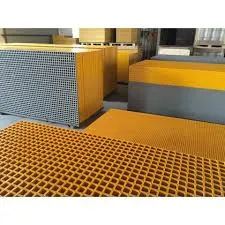
-
 Afrikaans
Afrikaans -
 Albanian
Albanian -
 Amharic
Amharic -
 Arabic
Arabic -
 Armenian
Armenian -
 Azerbaijani
Azerbaijani -
 Basque
Basque -
 Belarusian
Belarusian -
 Bengali
Bengali -
 Bosnian
Bosnian -
 Bulgarian
Bulgarian -
 Catalan
Catalan -
 Cebuano
Cebuano -
 China
China -
 China (Taiwan)
China (Taiwan) -
 Corsican
Corsican -
 Croatian
Croatian -
 Czech
Czech -
 Danish
Danish -
 Dutch
Dutch -
 English
English -
 Esperanto
Esperanto -
 Estonian
Estonian -
 Finnish
Finnish -
 French
French -
 Frisian
Frisian -
 Galician
Galician -
 Georgian
Georgian -
 German
German -
 Greek
Greek -
 Gujarati
Gujarati -
 Haitian Creole
Haitian Creole -
 hausa
hausa -
 hawaiian
hawaiian -
 Hebrew
Hebrew -
 Hindi
Hindi -
 Miao
Miao -
 Hungarian
Hungarian -
 Icelandic
Icelandic -
 igbo
igbo -
 Indonesian
Indonesian -
 irish
irish -
 Italian
Italian -
 Japanese
Japanese -
 Javanese
Javanese -
 Kannada
Kannada -
 kazakh
kazakh -
 Khmer
Khmer -
 Rwandese
Rwandese -
 Korean
Korean -
 Kurdish
Kurdish -
 Kyrgyz
Kyrgyz -
 Lao
Lao -
 Latin
Latin -
 Latvian
Latvian -
 Lithuanian
Lithuanian -
 Luxembourgish
Luxembourgish -
 Macedonian
Macedonian -
 Malgashi
Malgashi -
 Malay
Malay -
 Malayalam
Malayalam -
 Maltese
Maltese -
 Maori
Maori -
 Marathi
Marathi -
 Mongolian
Mongolian -
 Myanmar
Myanmar -
 Nepali
Nepali -
 Norwegian
Norwegian -
 Norwegian
Norwegian -
 Occitan
Occitan -
 Pashto
Pashto -
 Persian
Persian -
 Polish
Polish -
 Portuguese
Portuguese -
 Punjabi
Punjabi -
 Romanian
Romanian -
 Russian
Russian -
 Samoan
Samoan -
 Scottish Gaelic
Scottish Gaelic -
 Serbian
Serbian -
 Sesotho
Sesotho -
 Shona
Shona -
 Sindhi
Sindhi -
 Sinhala
Sinhala -
 Slovak
Slovak -
 Slovenian
Slovenian -
 Somali
Somali -
 Spanish
Spanish -
 Sundanese
Sundanese -
 Swahili
Swahili -
 Swedish
Swedish -
 Tagalog
Tagalog -
 Tajik
Tajik -
 Tamil
Tamil -
 Tatar
Tatar -
 Telugu
Telugu -
 Thai
Thai -
 Turkish
Turkish -
 Turkmen
Turkmen -
 Ukrainian
Ukrainian -
 Urdu
Urdu -
 Uighur
Uighur -
 Uzbek
Uzbek -
 Vietnamese
Vietnamese -
 Welsh
Welsh -
 Bantu
Bantu -
 Yiddish
Yiddish -
 Yoruba
Yoruba -
 Zulu
Zulu
FRP Applications in Thermal and Nuclear Power Generation Sustainability
FRP Products for Thermal and Nuclear Power Applications
Fiber Reinforced Polymer (FRP) products have emerged as a critical component in the advancement of thermal and nuclear power generation facilities
. Their unique properties, such as high strength-to-weight ratio, corrosion resistance, and durability, make them ideal candidates for various applications in these energy sectors.In thermal power plants, FRP materials are increasingly utilized in various structural components, including piping systems, tanks, and cooling towers. The thermal efficiency of these plants can be significantly enhanced by employing FRP products, which resist the corrosive effects of high temperatures and aggressive environments. Traditional materials like steel and concrete often suffer from oxidation and corrosion over time, leading to costly maintenance and repairs. However, FRP materials are designed to withstand such challenges, ensuring longevity and reliability in the harsh operational conditions of thermal plants.
In the realm of nuclear power, safety is paramount. The use of FRP products provides notable advantages due to their lightweight nature and high tensile strength. When used in containment structures, FRP composites enhance the overall integrity and security of nuclear facilities. Additionally, their resistance to radiation makes them suitable for components that may be exposed to nuclear materials. From structural reinforcements to mechanical components in cooling systems, FRP materials contribute significantly to the safety and efficiency of nuclear power operations.
frp products for thermal and nuclear power

Another significant advantage of FRP products is their ease of fabrication and installation. Unlike traditional materials, FRP can be molded into complex shapes and sizes, offering versatility in design. This capability allows engineers to create custom solutions tailored to specific needs within thermal and nuclear plants, streamlining both the construction and maintenance processes.
Environmental considerations also play a vital role in the use of FRP in energy generation. As the industry shifts towards sustainable practices, FRP products contribute to reducing the carbon footprint of power plants. Their lightweight properties lead to lower transportation emissions and diminished environmental impact during installation. Additionally, when utilized in energy efficiency applications, FRP can help decrease operational energy demands, further supporting global sustainability goals.
In conclusion, the integration of FRP products into thermal and nuclear power systems represents a significant advancement in materials technology. Their ability to withstand harsh environments, enhance safety, and promote sustainability makes them an invaluable resource in the quest for efficient and reliable energy generation. As the demand for cleaner and more sustainable energy sources continues to grow, the role of FRP products will undoubtedly expand, paving the way for innovative solutions that meet both industry and environmental standards.









